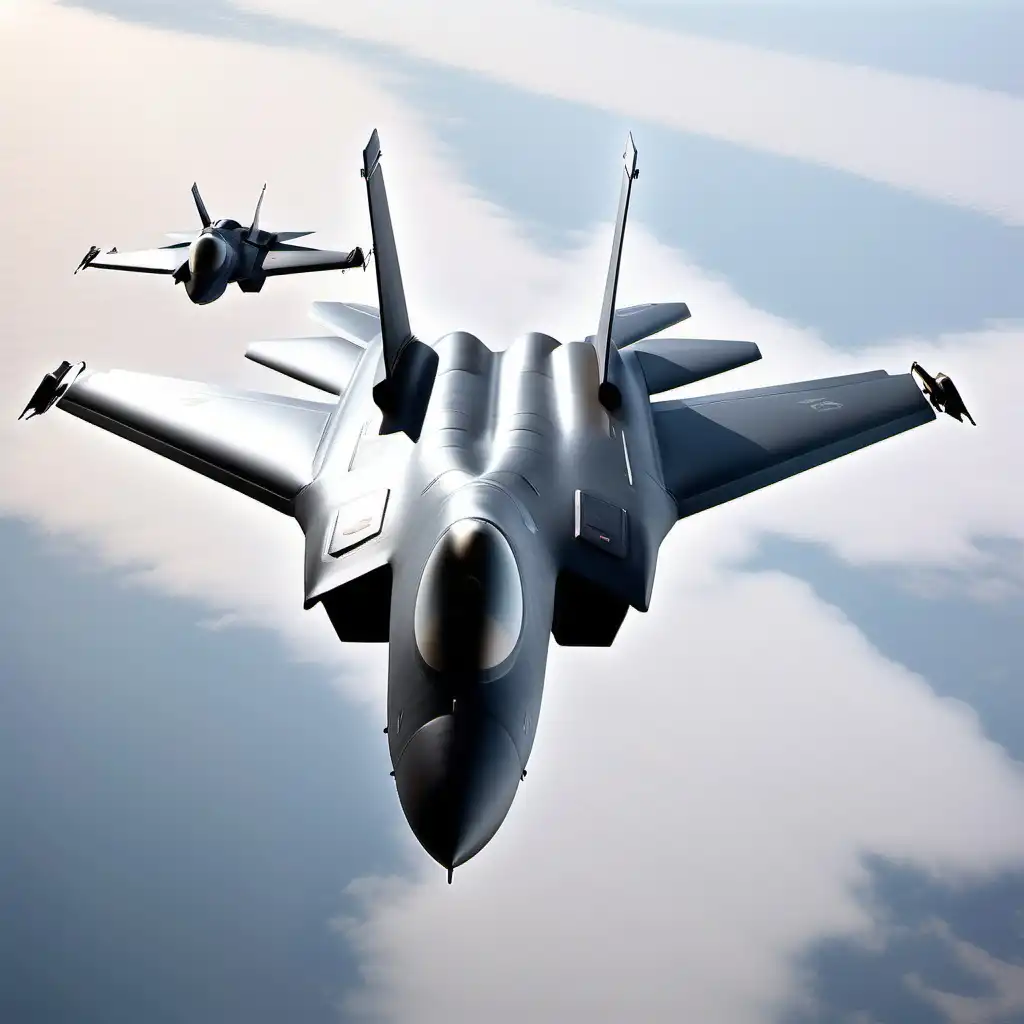图片提示词prompt
Definition: 7th-generation jet fighters represent the next evolution in military aviation, building upon the capabilities of 6th-generation fighters, which are currently in development.
Expected Features:
Advanced Stealth Technology: Enhanced stealth capabilities to evade detection by radar and other sensors.
Artificial Intelligence (AI): Integration of AI for autonomous decision-making, mission planning, and combat operations.
Directed Energy Weapons: Potential use of laser or microwave weapons for defense and offense.
Hypersonic Speed: Capability to travel at speeds exceeding Mach 5.
Network-Centric Warfare: Seamless integration with other military assets for real-time data sharing and coordination.
Adaptive Engines: Engines that can adjust performance for optimal efficiency and power in various flight conditions.
Swarming Technology: Use of unmanned drones or aircraft that can operate in coordinated swarms.
Comparison with Previous Generations
6th-Generation Fighters: Focus on AI, stealth, and network-centric warfare (e.g., NGAD in the U.S., Tempest in the UK).
5th-Generation Fighters: Emphasis on stealth, advanced avionics, and sensor fusion (e.g., F-22, F-35).
7th-Generation Fighters: Expected to push boundaries in autonomy, speed, and weapon systems.
Challenges
Technological Hurdles: Developing reliable AI, hypersonic propulsion, and directed energy weapons.
Cost: High development and production costs.
Ethical Concerns: Use of autonomous systems in combat raises ethical and legal questions.
定义: 第7代喷气式战斗机代表了军事航空的下一个发展,建立在目前正在开发的第6代战斗机的能力之上。
预期功能:
先进的隐身技术: 增强的隐身能力,以逃避雷达和其他传感器的检测。
人工智能 (AI): 将AI集成到自主决策、任务规划中









